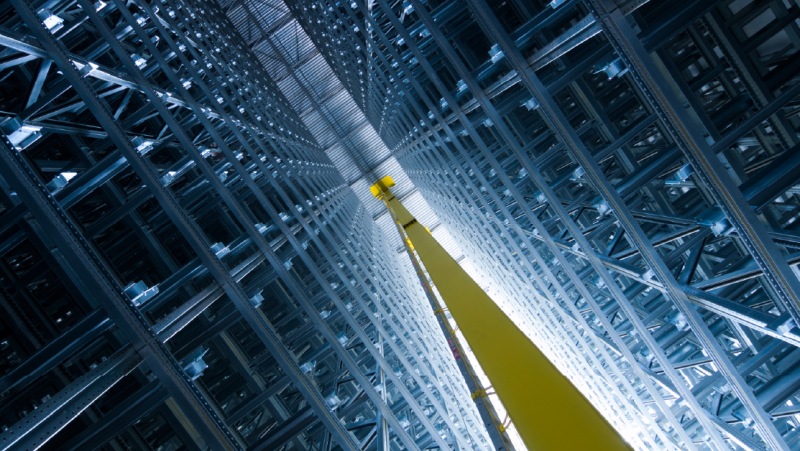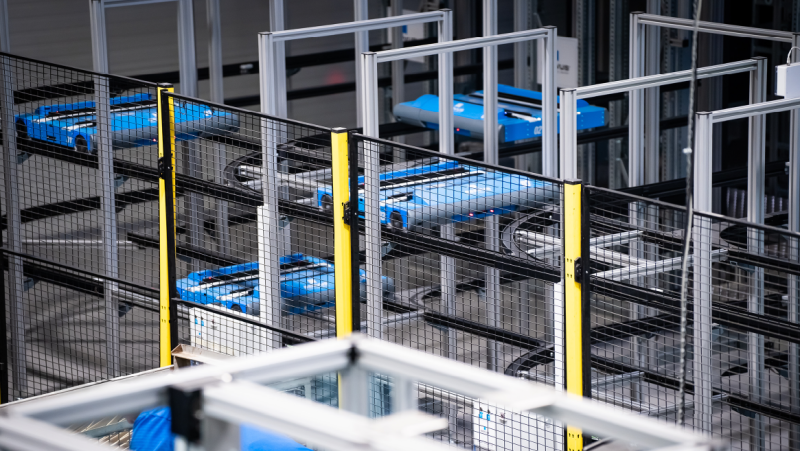Warehouse Automation: The Technologies
- Automation
- Article
Many automation projects start with the idea of replacing manually driven vehicles with automated ones. But this solution may not bring the desired results, and usually, even before the fleet’s replacement, it becomes clear that a deeper analysis of automation type and level is required. Not always it is possible and beneficial to opt for a fully automated warehouse or autonomous handling equipment. Often a gradual process, which lets you prepare for changes and absorb them, will be a better choice. But a radical change can work too. What are the options, and which technologies can you use? And what should you consider before deploying them?
The first step towards automation: Standardising processes
No matter what kind of advanced automation you’re planning to introduce, you always must first identify and standardise your processes and tie-ins to integrated technologies. This prevents misunderstandings with your solution suppliers, and it also helps you see the scope of what’s needed. After all, visions of greater automation won’t necessarily bring the level of efficiency you want, because if there are too many non-standard (non-repeating) processes, many control-system customisations will be needed. Repeating tasks, on the other hand, can be automated easily.
Pay special attention to your choice of the system integrator. An experienced control-system provider can guide you on which processes you should automate and how much, help you choose a path that’s right and tailor-made for your company, and dovetail your technologies, software, processes and people into one functional entity.
You always must first identify and standardise your processes and tie-ins to integrated technologies.
Software automation: WMS (Warehouse Management Systems)
Deploying a WMS as the control system for your warehouse saves you time and money. Picking operations with no system in place are very dependent on operators’ knowledge of storage locations, leaving them to “hunt around”, while with a WMS, a work queue can be composed for each operator and their routes through the warehouse optimised. Items for picking and their locations can be shown one by one on a forklift’s touchscreen or an operator’s hand scanner to maximise travel efficiency. When operators load goods and confirm picking (via scanning or touchscreen approval), each item is also automatically subtracted in the system; no transcription is needed. This minimises mistakes and speeds up stocktaking because stock data is always up-to-date. In short, data entry and the distribution of logistics orders and requirements are automated.
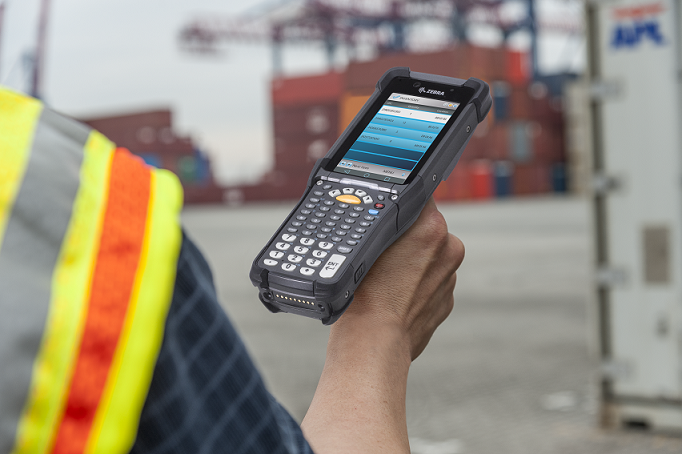
What to consider before deploying a WMS:
- What are your warehouse processes?
- Who will be working with the system, and at what levels?
- What other enterprise systems will the WMS need to be integrated into?
- What is goods identification at your warehouse like? (Barcodes, RFID, etc.)
The benefits of deploying a WMS:
- Optimised warehouse stocks
- A real-time integrated view of your stocks
- Faster warehouse operations
- Minimised shipping errors
Goods-to-person concept
A system of hardware technologies, specifically conveyors and/or vertical storage systems, can be used to move materials, components and goods to picking positions for finishing, packaging and other operations. This solution brings major time savings and minimises mistakes. Since this significantly reduces the number of picking positions, Pick-by-Light navigation is an ideal option. In Pick-by-Light, an indicator light shines above readied goods’ specific positions. This makes picking faster – and more precise. It’s mainly useful for standardised and high-turnover goods.
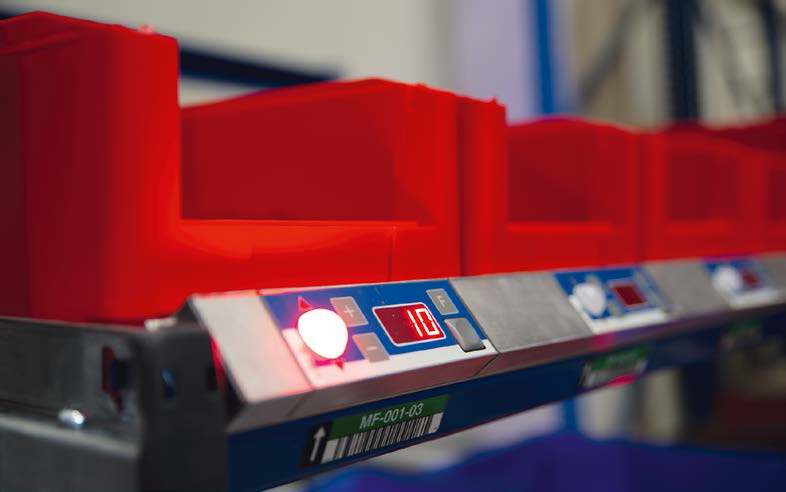
What to consider before deploying the “goods-to-person” concept:
- How many items go through the warehouse per day?
- How standardised the items are in terms of packaging?
- How must the goods be processed in later stages (finishing, packaging etc.)?
The benefits of a goods-to-person concept:
- Faster picking
- Minimised error rate
- Increased warehouse capacity
Warehouse navigation systems can speed up handling for VNA forklifts by up to 20%.
Smart handling equipment: High rack stackers
The next “evolutionary stage” for handling equipment and its operation is semi-automated vehicles. Because they are operated using the Warehouse Management System, operators are not driving them. These high rack stackers, also known as VNA (Very Narrow Aisle) systems, let you use narrower aisles and store goods easily and safely, even in very tall warehouses (up to 14 metres).
You can run smart handling equipment in one of two different modes – a semi-automated mode with an operator still in the vehicle, or a fully automated mode. In semi-automated operation, the vehicle navigates individual warehouse positions on its own, with no operator oversight needed. But it is up to the operator to perform specialised tasks and deal with non-standard situations.
Warehouse navigation systems can speed up handling for VNA forklifts by up to 20%. Another feature of operating vehicles via a WMS is that you can optimise work queues with rack placements at various heights and minimise your lift and trip counts. Besides saving time and energy, this type of solution also makes life easier for operators.
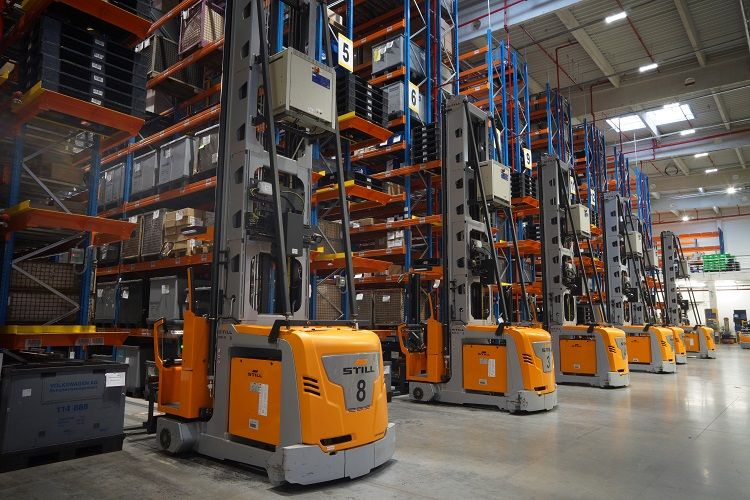
What to consider before purchasing VNA forklifts:
- How high will the racks be?
- How narrow will the aisles be?
- What type of forklift cabin will you use (one that stays at the bottom “man-down”, or one that travels up with the fork “man-up”)?
- How will the forklifts be connected with the control system?
- How much electricity, or more precisely input power, do they use? VNA systems consume large amounts of energy on start, which can make it impossible to start up multiple forklifts at once.
The benefits of forklift systems:
- Increased warehouse capacity (when replacing your rack system at the same time)
- Faster handling by up to 20%
- Serving multiple aisles using a single forklift
Likely the strongest argument against induction navigation lies in requirements for floor levelness and the integration of navigation rails for the vehicles to ride on, but AGVs have their advantages.
Smart handling equipment: Automated and autonomous vehicles
Automated (autonomous) vehicles are coming into the limelight more and more. The goal is clear – to eliminate human labour for repetitive manual tasks and move workers into activities with higher added value. The intelligence in these systems may not be in the forklifts alone; it may also be in other handling equipment – the logistics train (a towing unit + attached trailers), the milk run or tugger trains (towing units with frames). All these together can be categorised as Automated Guided Vehicles (AGVs) or in some cases AGCs (Automated Guided Carts). As the names imply, these vehicles are guided using sensors, rails or magnetic strips in the floor, decreasing their flexibility. For standardised paths, however, they can be useful. AIVs (Autonomous Intelligent Vehicles) are the next step up; these can travel entirely independently in all directions.
When using just one AIV it’s best to use the manufacturer’s application, but for a comprehensive project, a WMS provides more benefits for the overall management of warehouse processes and technologies.
AGVs: The navigation system is important
When employing automated forklifts, the method they use to navigate your warehouse is very important. You can choose from various induction and laser navigation technologies, and new RTLS (Real-Time Location System) technologies are now available as well. Likely the strongest argument against induction navigation lies in requirements for floor levelness and the integration of navigation rails for the vehicles to ride on. These alone make it clear that these vehicles will only be riding fixed routes. Yet this can amount to an advantage if you don’t need to change routes often. For rack storage, for example, such a system can entirely suffice. However, if these vehicles will be supplying your manufacturing hall, changing that hall’s layout would demand considerable time and money.
Laser guidance, meanwhile, usually does not require any floor adjustments. Reflectors are installed into the spaces (or natural orientation points are used), and the routes can be adjusted fairly easily. Navigation in real-time using a Real-Time Location System (RTLS) lets vehicles monitor and navigate buildings using special anchors and chips with practically no limitations; the vehicles then truly travel autonomously.
What to consider before purchasing automated handling equipment:
- For what processes will it be serving?
- Will it be integrated into an existing operation or a new one?
- Which navigation type will you use?
- Will you control it using the manufacturer’s application or a WMS?
- What kind of spaces (with/without people) will it be navigating, and thus what kind of safety sensors will it have?
The benefits of AGVs:
- Manual labour savings
- Deployability within existing processes
- Route optimisation
- A choice of several navigation methods
AIVs: Autonomous Intelligent Vehicles
AIVs can handle warehouse units without human intervention or the need for major adjustments to halls themselves. These advantages translate into an estimated 15% savings on deployment costs: unlike AGVs, no navigation system or special sensors need to be placed in the floor; and AIVs can navigate using solely their software and a digital map of the hall. These devices can also avoid people and other unexpected obstacles on their own and bring loads wherever needed. The vehicles adapt their routes on their own as they learn. As machine learning advances, we can expect an even bigger boom for this technology.
What to consider before purchasing automated handling equipment:
- In what processes will it be serving?
- What load-bearing capacity will it need?
- Will it be controlled using the manufacturer’s application, or a WMS?
- What is your hall’s digital map like? (Forbidden zones, crossroads, etc.).
The benefits of AIVs:
- No hall adjustments needed
- Quick deployment
- Fully flexible hall navigation
- Safe operation even alongside people
The king of warehouses: The fully automated warehouse
Everything is done with no human intervention, and only the control system knows what’s going on inside. That’s how things look in a fully automated warehouse (Automated Storage and Retrieval Systems, AS/RS). And yet even in our day and age, an AS/RS still depends on human knowledge. At least at the start, when every process needs to be defined – and not just the standard ones, but non-standard and error processes as well. Machines must now handle everything that operators once did, but machines cannot yet make decisions independently. And they won’t for a long time to come. Thus right at the start of your process for deploying an automated warehouse, it’s good to invite a WMS/MOM supplier that’s also an integrator of the individual technologies. Companies often skip this step, delaying their discussions on how to integrate and operate all the selected equipment until the very end.
Fully automated warehouses are not something that’s just for major automotive and e-commerce firms.
Fully automated warehouses are not something that’s just for major automotive and e-commerce firms. Companies from other fields are turning to them more and more often when they want to stay competitive and enjoy all the benefits of automation. But above all, AS/RS is a solution that will keep on working without major interventions even over the next five to ten years. Thus besides just preparations, testing is important before going live, as it will reveal contingencies that may have been forgotten when defining the project.
What to consider before building a fully automated warehouse:
- What kind of spaces it will be installed in?
- What technologies will it contain?
- What is its warehouse logic?
- Where are its transfer points, and what will they look like?
- Don’t forget to set aside time for testing.
The benefits of a fully automated warehouse:
- Savings of manual labour
- Warehouse stock optimisation
- Maximum utilisation of warehouse space
- A real-time stock overview
- Savings on handling equipment
So how should you approach automation, and what does project implementation look like? How do the various vehicles’ navigation methods differ? What does integration mean for a company’s backbone systems, and how does automation look in practice? We’ll be bringing you all this and more in future parts of our series on automation. Be there.
Share article
Top stories from logistics, production and IT.
Subscribe to Aimtec Insights
By registering, you agree to the processing of your personal data by Aimtec as described in the Privacy policy.
Get top stories and articles
from Logistics, Production and IT.
Subscribe to Aimtec Insights
By registering, you agree to the processing of your personal data by Aimtec as described in the Privacy policy.




